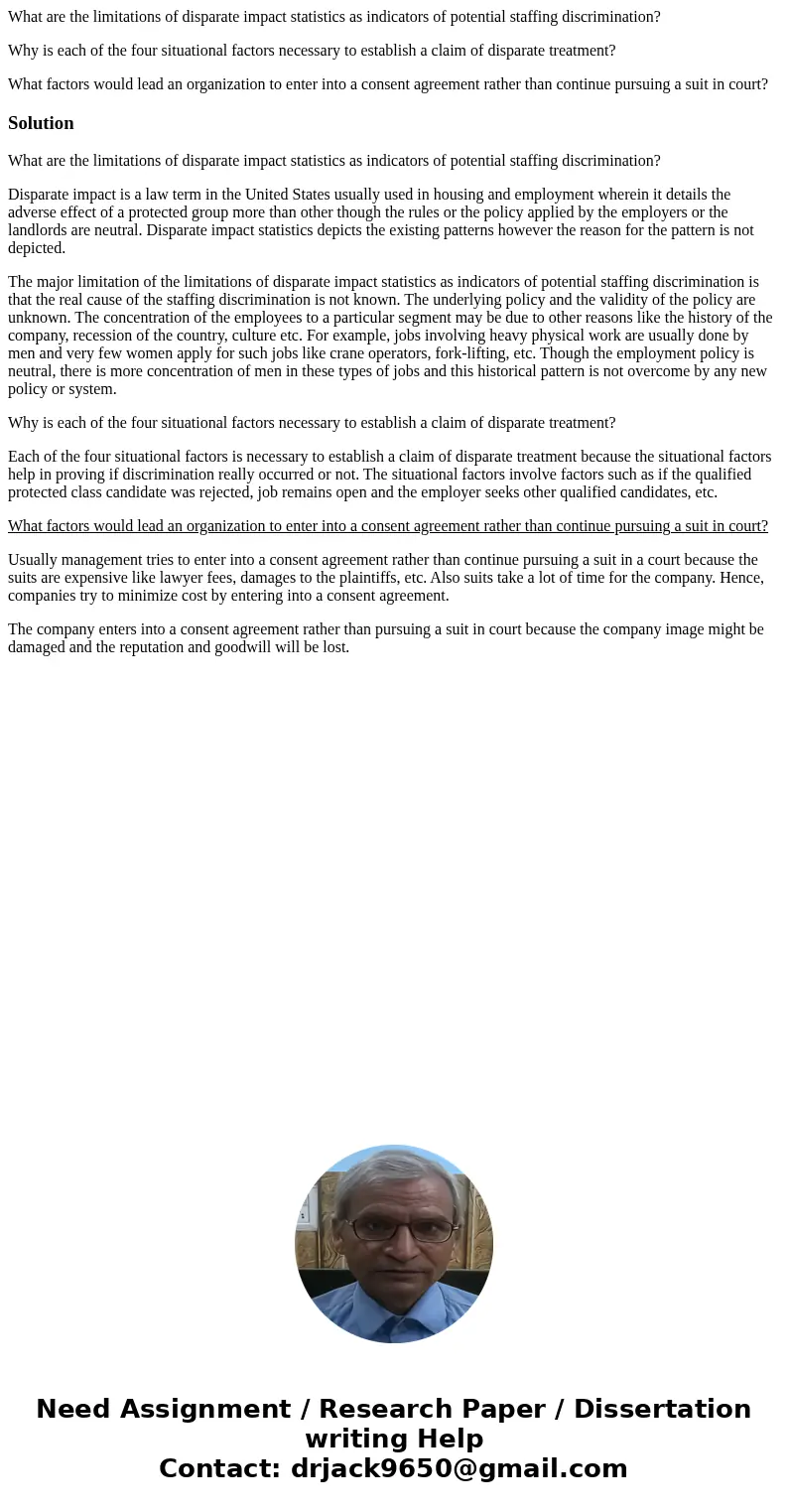What are the limitations of disparate impact statistics as i
What are the limitations of disparate impact statistics as indicators of potential staffing discrimination?
Why is each of the four situational factors necessary to establish a claim of disparate treatment?
What factors would lead an organization to enter into a consent agreement rather than continue pursuing a suit in court?
Solution
What are the limitations of disparate impact statistics as indicators of potential staffing discrimination?
Disparate impact is a law term in the United States usually used in housing and employment wherein it details the adverse effect of a protected group more than other though the rules or the policy applied by the employers or the landlords are neutral. Disparate impact statistics depicts the existing patterns however the reason for the pattern is not depicted.
The major limitation of the limitations of disparate impact statistics as indicators of potential staffing discrimination is that the real cause of the staffing discrimination is not known. The underlying policy and the validity of the policy are unknown. The concentration of the employees to a particular segment may be due to other reasons like the history of the company, recession of the country, culture etc. For example, jobs involving heavy physical work are usually done by men and very few women apply for such jobs like crane operators, fork-lifting, etc. Though the employment policy is neutral, there is more concentration of men in these types of jobs and this historical pattern is not overcome by any new policy or system.
Why is each of the four situational factors necessary to establish a claim of disparate treatment?
Each of the four situational factors is necessary to establish a claim of disparate treatment because the situational factors help in proving if discrimination really occurred or not. The situational factors involve factors such as if the qualified protected class candidate was rejected, job remains open and the employer seeks other qualified candidates, etc.
What factors would lead an organization to enter into a consent agreement rather than continue pursuing a suit in court?
Usually management tries to enter into a consent agreement rather than continue pursuing a suit in a court because the suits are expensive like lawyer fees, damages to the plaintiffs, etc. Also suits take a lot of time for the company. Hence, companies try to minimize cost by entering into a consent agreement.
The company enters into a consent agreement rather than pursuing a suit in court because the company image might be damaged and the reputation and goodwill will be lost.

 Homework Sourse
Homework Sourse